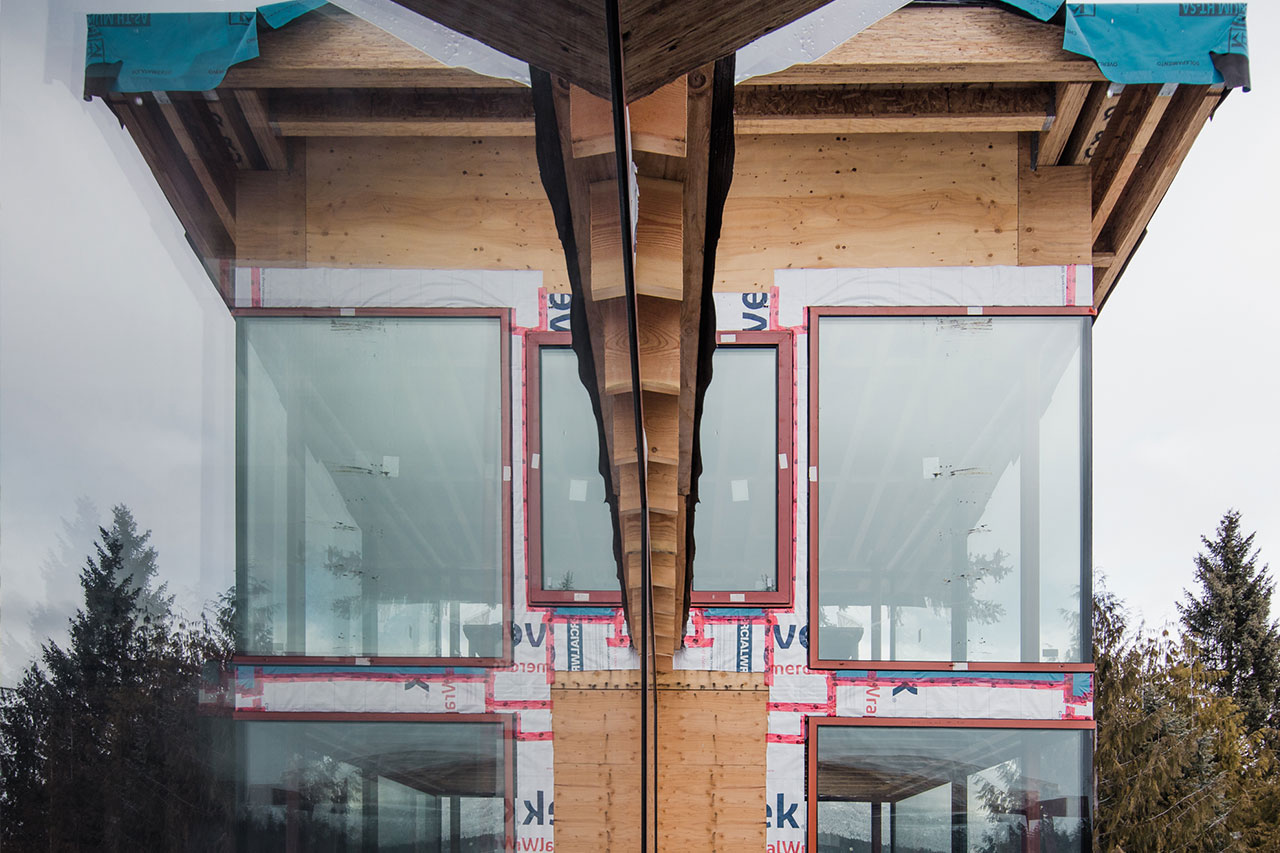The Do’s and Don’t of Recycling In Whistler
There are always so many unknown questions around recycling that stem from what exactly can be recycled and what bin they actually go in. This blog will help to answer hopefully everything you need to know about recycling here in Whistler.
I constantly find myself standing in front of the containers bin holding an item and wondering if it belongs in there. Then the conundrum starts in my head, if I throw it in there and it doesn’t belong, then I have just contaminated everything but I want to make sure I am doing my part so I end up blindly throwing it in there and hoping for the best. Fingers crossed you chose the right bin, and you didn’t just pollute all the other stuff that belonged. The process has been dubbed “wishcycling” – the act of throwing something in the recycling bin because you hope it’s recyclable, not because it is. The main barrier for effective recycling is misinformation and let’s be honest, Reduce, reuse, and recycle is crucial to sustainable life on this planet, and learning how to recycle effectively is a great start.
I figured that working for a sustainable design company where Mother Earth is our main client and if I was having these questions then there are bound to be others with the same concerns. From inconsistent labelling and a vast amount of conflicting information out there, no wonder so many items that can be recycled just don’t. So, to help with the problem, I decided that I would do some research on the subject to educate myself and share my findings in this blog to help others with the same burning questions.
I guess the 3 biggest questions I have are:
“What Actually Can Be Recycled”
“What Bins Do They Go In”
“What is the Story with Compostable Products and Take Away Containers”.
I am sure we will answer a few more questions along the way but those are the 3 burning topics that need to be covered to make us all recycling ninjas. Lets start with the first one…..
“I figured that working for a sustainable home design company where Mother Earth is our main client, that if I was having these questions then there are bound to be others with the same concerns”.

What Actually Can Be Recycled?
According to the BC provincial website these are the items that can be recycled:
- Plastic bottles, jugs, and containers
- Aluminum cans
- Polycoat containers
- Bag-in-a-box and pouches
- Glass bottles
- Other metal cans
- All beer cans (domestic and import)
- Refillable glass beer and cider bottles (standard and non-standard)
Out of that list I am unsure on what exactly is polycoat containers and Bag-in-a-box and pouches. The first thing I think of for Bag-in-a-box is one of those carboard wine containers with the grey pouch inside (lo and behold that is exactly what it is). After some digging a polycoat container really is just any container, carton, or cup with a plastic polycoat coating on the inside hence the name. But what is the story with pouches? As a new mom myself, I think of baby food pouches when I think of pouches so can they be recycled? The answer is yes, and you actually get a 10c refund in the process. I had to go and ask a staff member as I was getting conflicting messages when I tried to find the information on the web. You can also drop it in the white bins to the right as soon as you enter the Nesters Recycling Depot. That is for donations to Whistler Community Services, they take empties and anything that has a refund attached to it.
The bottom two, beer cans and bottles you can get money back when you return them to the bottle depot. There is one located in the same recycling facility at Nesters, and you now get 10¢ back for several items that I am sure are not on your radar. That brings me into my next topic labeled “Did You Know?”
Did You Know?
Did you know that juice containers of all sizes have a 10¢ refund on them? This includes drink pouches, love child fruit pouches (as mentioned above), juice cups, large juice containers and convenience-size juice containers. I know how many juice boxes I went through as a child and now you can make money off them!
You can now recycle plastic containers like milk cartons, water bottles, soda bottles, gable top containers like soy milk, almond milk, and cow’s milk. You can also now get a 10¢ deposit back on juice boxes, coconut milk containers or even a chocolate milk treat you had at lunch time.

Let’s not forget about the glass containers you also now get a refund on. Items such as Perrier water, cranberry juice, glass milk containers and yes let’s not forget that wine in a box also has a 10¢ return on its head. Click here for a complete list
What Happens To It?
Taken straight for the BC provincial website this can make you feel good. This is what happens to all the items that you recycle on a daily basis.
Aluminum Cans – Cans end up back on the shelf as new cans within six weeks! It takes 95% less energy to manufacture a can from recycled aluminum than it does to make it from brand new material.
Plastic Bottles – These are turned into new bottles and buckets using about a third less energy than manufacturing new plastic.
Glass – This is used in the manufacturing of a variety of things such as fibreglass insulation and sandblasting material.
Other Metal Cans – Non-aluminum cans (usually steel) can be made into hundreds of products such as rebar and car parts.
Drink Boxes and Cartons – Polycoat containers are hydra-pulped and turned into tissue paper and cardboard boxes.
Refillable Glass Bottles – The industry standard refillable beer bottle is reused an average of 15 times and is used by a collective of brewers across the province and country. At the end of the bottle’s life cycle, it is crushed and recycled into new glass bottles.
In Whistler we also have free scrap metal recycling, electronics recycling, paint, pesticide and fuel recycling and metal residential packaging. They all get turned into something amazing as well. For more information on Whistler Recycling click here.

What is the Story with Compostable Products and Take Away Containers?
All too often you are at the end of a busy week and the last think you want to do is cook so you get takeout, but you are left with a bunch of containers that you are unsure if they should go into containers or the organic compost bin or the garbage. I have always thought that the paper like containers I get from Sushi can go into the compost but guess again…..
Paper Compostable Take-out Containers
You know the ones; the ones you get from Samurai Sushi every week and you wonder do they go into paper or can they go into the organic compost bin. I always struggle with this one. The long and short of it is if the container is really soiled with food, then it can go into the organics. If it is not, then it goes into papers. You can always rip off the lid and put that into papers and the spoiled bottom into organics.
Hard Plastic Containers
These can be recycled into containers; they just need to be empty and rinsed. Recycle BC accepts black plastics so just toss them in there!
Foam Containers
I am not sure why anyone is still serving take out in foam, if they are you should ask them why and tell them to switch but if you do find yourself with foam, it can be recycled in a special bin called foam. They are easy to break and contaminate others so keep them separate until you are ready to toss them out.
Pizza Boxes
These guys can be recycled, just tear off the top and that goes into cardboard and the bottom soiled portion goes into organics bin.
Paper Take Out Containers
This is one that I always get confused with, can it be recycled even if it has that coating on the inside, drum roll please, the answer is yes. They can go into containers as long as they are empty and clean.
But what about those plastic cups that read Biodegradable on them in green. Before writing this article I always thought those go into the compost but then I found out they need to be burnt at a certain temperate before they biodegrade so wanted to make sure once and for all what the answer was for this one. That leads me into my next section called…
Does saying it is Biodegradable actually mean it will Biodegrade?
I wanted to know what the word actually means so after some digging this is what I found out. The first thing that I found out there is a lot of confusion around the definition of the word itself. In basic terms the definition is simple: if something biodegrades when given the right conditions and presence of microorganisms, fungi, or bacteria, it will eventually break down to its basic components and blend back in with the earth.
But the problem lies in the way the product is labeled and how the word “compostable” gets thrown around within the “biodegradable” category. Simply put all compostable products are biodegradable but require special settings to get to that point. The facilities that can break them down have to keep the material at 140 degrees Fahrenheit for 10 consecutive days to achieve it. So simply throwing a compostable cup into organics because it says that it will decompose will not work. In Whistler, we are lucky, those cups can be thrown into the containers bin, and they are trucked down to Vancouver and they are melted down to make new products. Pretty amazing eh!
What Bin Do They Go In?
Ok so now let’s play a game called “What Bin Do They Go In?”. Here is a list of a few items that people tend to get confused, I am sure the list can be longer but chose a few that will hopefully help you when standing at the recycling station wondering “where the hell does this go?”. After all, it only take 3% of contaminants for the bin of recyclables to become garbage so let’s make sure we are doing it correctly!
Coffee Cups – they can be recycled in containers. People think that because it has a plastic liner inside (which we learnt above is polycoat) that it can’t be recycled but it can and should. The sleeve can go into papers. Did you know that if you buy one coffee in a disposable cup every day you will end up creating 23 pounds of waste in only one year. Ouch.
Foam Containers – there is a separate bin for white and black foam (like the ones you get when you buy raw meat or chicken).
Christmas Gift Wrap – you can recycle wrapping paper and gift bags in the paper bin but ribbons, bows and foil paper are not accepted.
Sushi Takeout Meal – The compostable container can go into organics if full of food but if not then into papers. The plastic containers that you get your gyoza sauce in goes into containers and the chop sticks go into garbage. The compostable green bag it comes in can also go into organics so feel free to load up the bag with your soiled containers and throw it all in together.
Zipper lock pouches like Granola or Candy – They go into the Other Flexible Plastic Packaging bin beside plastics, they get recycled differently than plastics but still get recycled none the less. Items in this category include pet food pouches, grape bags, dishwasher pod pouches, dried pasta bags and ziplock sandwich bags. They are pretty much anything that is not stretchy plastic that has a lock seal and foil liner. Items that belong in this bin are crinkly and designed to keep food fresh over time.
Chips – these get recycled as well. They go into the Other Flexible Plastic Packaging bin with along with chocolate bar wrappers, cereal bags, cookie bags.
Onion Net Bag – these can be recycled! Believe it or not they go into the same bin as the items listed above – Other Flexible Plastic Packaging.
Wet Wipes – they as well go into the same container as all the items I have listed above. The one to the right of the big plastics bin – Other Flexible Plastics Packaging.
Yogurt Container – This one is a trick question as the answer is returns. Remember any milk-based container you now get a 10¢ return on them so they are worth money. Same as milk containers, soymilk tetra packs, juice boxes, fruit juice pouches, metal containers like tomato and pineapple juice. For a full list click here.
Compostable Cups – this one is an easy one as we talked about in detail above but wanted to see if you were paying attention. It goes into the containers.
Biodegradable Diapers – The word biodegradable always throws me off but the long and short of it is that without the proper certified compostable commercial facility it cannot be done. These go right to the garbage.
Click here for a list with photos (List of OFPP Photo Examples)
In Conclusion
Hopefully I have answered a few of your burning recycling questions but I am aware that there is still so much to be covered. Recycle BC and our local government work hard to grow the program every day with its goal of making recycling “easy”. Far too many people say that nothing gets recycled so why even bother, they saw a docuseries or something along those lines saying that it all ends up in the garbage but that is simply not the truth. Ideally, we need to get to a place that is zero waste so no garbage facilities are even needed. We can recycle what we have at home and use places like the Nook Refillery in Squamish or Eco Refillery in Vancouver or bulk food stores where you can bring in your own bottles and reuse what you already have. Imagine a world with no recycling because you only have one of everything. One yogurt container, one milk container, a single container instead of multiple throw away containers. We are the throw away society and this needs to change.
Recycling facilities like the one here in Whistler are doing their part to help Mother Nature and keep plastics and many other items out of the landfills. You just need to make sure that what you throw away is clean otherwise it starts to smell and creates mold and if it is bad enough, the whole bin needs to be thrown away so make sure you rinse them out before you throw them out! Do your part and recycle, our children’s lives depend on it.
At GNAR Inc we are passionate about creating sustainable homes, let us know how we can help you bring your dream house to life. Call us at 604.962.1611 or email info@gnarinc.com for more information.
References:
Recycling BC Hotline – 1-800-667-4321
Staff at Whistler Recycle Depot









